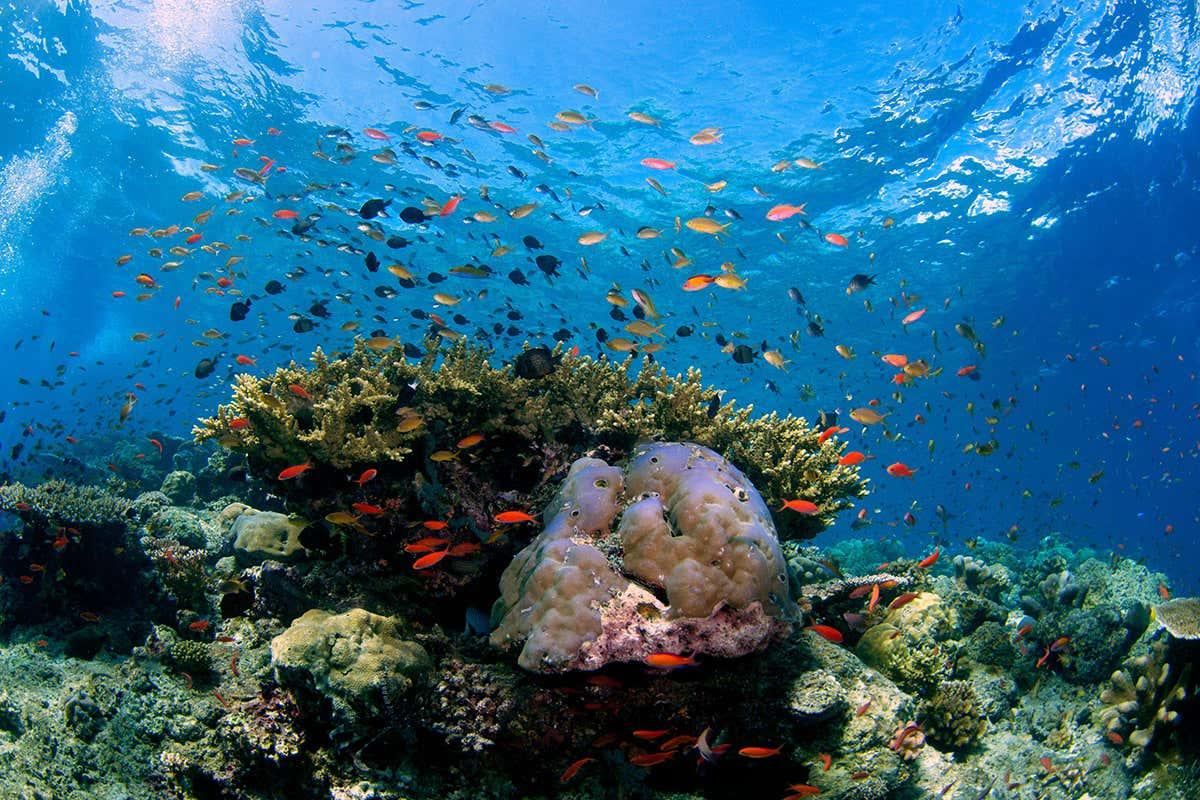Table of Contents
- Understanding the Interconnectedness of Planetary Systems
- Exploring Biodiversitys Role in Ecosystem Resilience
- The Impact of Climate Change on Natural Habitats
- Sustainable Practices for Preserving Planetary Health
- Innovative Solutions for Mitigating Environmental Challenges
- Q&A
- To Conclude
Understanding the Interconnectedness of Planetary Systems
The intricate connections among various planetary systems highlight the delicate balance of life on Earth and beyond. Our planet’s atmosphere, hydrosphere, biosphere, and lithosphere are not isolated entities; instead, they work intricately together. For example, the atmosphere regulates climate and weather patterns, which directly influence terrestrial and aquatic ecosystems. The exchange of gases between these systems ensures that vital nutrients and energy flow seamlessly, supporting life across diverse habitats.
Significant factors contributing to the interconnectedness of planetary systems include:
- Energy Transfer: The Sun is the primary energy source, driving climate patterns and influencing photosynthesis, which sustains food chains globally.
- Nutrient Cycling: Elements such as carbon, nitrogen, and phosphorus are recycled between air, soil, and water, supporting life and maintaining ecosystem health.
- Water Movement: The hydrological cycle links terrestrial and aquatic environments, ensuring that both can thrive and adapt to changing conditions.
Understanding these connections is further enhanced through data on system interactions. The following table illustrates some key planetary systems and their dynamic exchanges:
| System | Key Functions | Interdependent Systems |
|---|---|---|
| Atmosphere | Regulates climate; facilitates gas exchange. | Biosphere, Hydrosphere |
| Hydrosphere | Supports aquatic life; regulates temperature. | Atmosphere, Lithosphere |
| Biosphere | Provides habitats; sustains food webs. | Atmosphere, Lithosphere |
| Lithosphere | Provides nutrients; influences landforms. | Hydrosphere, Biosphere |

Exploring Biodiversitys Role in Ecosystem Resilience
Biodiversity plays a pivotal role in maintaining the delicate balance of ecosystems, acting like the intricate gears of a finely-tuned machine. Every species, no matter how small, contributes to the web of life through various functions, such as nutrient cycling, pollination, and habitat provision. These interactions form not only the structure of ecosystems but also enhance their resilience to disturbances, whether they stem from natural events or human activities.
In resilient ecosystems, a rich variety of species ensures that if one is affected by a disease or environmental change, others can fill its role. This redundancy is key, allowing ecosystems to adapt and recover more swiftly. Consider the following factors that highlight how biodiversity contributes to ecosystem resilience:
- Functional Diversity: Different species perform various roles, from producers to decomposers, which facilitates the stability of ecosystem functions.
- Genetic Diversity: A higher variety within species leads to greater adaptability to changing climates and environments.
- Species Interactions: The complex relationships between species can lead to greater efficiencies in resource use and nutrient exchange.
Investment in conserving biodiversity is a powerful strategy for enhancing resilience. By protecting habitats and promoting sustainable practices, we can support the intricate relationships that sustain life on Earth. The table below offers a glimpse into some key ecosystems and the biodiversity they support:
| Type of Ecosystem | Biodiversity Indicators | Resilience Benefits |
|---|---|---|
| Coral Reefs | Fish and coral species diversity | Protection against storm surges |
| Tropical Rainforests | Tree species richness | Carbon storage and climate regulation |
| Wetlands | Plant and animal species diversity | Water filtration and flood control |

The Impact of Climate Change on Natural Habitats
Climate change is reshaping ecosystems across the globe, posing significant challenges to the delicate balance that sustains various forms of life. As temperatures rise, many species are forced to adapt, migrate, or face extinction. This disruption is particularly evident in regions such as the Arctic and tropical forests, where biodiversity is not just abundant but critical to overall planetary health. The increased frequency and intensity of natural disasters, such as hurricanes and droughts, further exacerbate the pressures on these habitats, leading to irreversible changes.
Changing weather patterns are also altering the availability of resources like water and food, pushing species to evolve or relocate to survive. For instance, coral reefs, often referred to as the “rainforests of the sea,” are bleaching at alarming rates due to warmer ocean temperatures. The ramifications of such changes are far-reaching, affecting not only marine life but also the livelihoods of millions who rely on these ecosystems for food and income. Important factors contributing to habitat degradation include:
- Ocean Acidification: Alters the chemistry of marine environments, impacting shellfish and coral.
- Deforestation: Reduces biodiversity and increases carbon emissions, further driving climate change.
- Habitat Fragmentation: Isolates species populations, making recovery efforts increasingly difficult.
The impact extends beyond the immediate effects on flora and fauna; it also disrupts ecological services that humans depend on, such as pollination, clean water, and carbon sequestration. As habitats transform, conservation strategies must evolve to address the dynamic challenges posed by climate change. Understanding the interconnectedness of species within their environments is crucial. The table below summarizes some key ecosystems at risk:
| Habitat Type | Key Threats | Conservation Status |
|---|---|---|
| Coral Reefs | Rising temperatures, acidification | Critical |
| Tropical Rainforests | Deforestation, climate-driven droughts | Endangered |
| Wetlands | Pollution, habitat loss | Vulnerable |

Sustainable Practices for Preserving Planetary Health
Adopting sustainable practices is essential for fostering an environment that promotes both ecological balance and the well-being of our planet. One effective approach individuals and communities can take is engaging in reducing waste through various strategies, including:
- Composting: Transforming organic waste into nutrient-rich soil enhances garden productivity while minimizing landfill contributions.
- Recycling: Avoiding raw material consumption by reprocessing materials saves energy and conserves natural resources.
- Upcycling: Repurposing items creatively can extend their life cycle and reduce the need for new products.
Another cornerstone of planetary health is sustainable consumption, where mindful choices play a pivotal role. People can significantly impact environmental sustainability by opting for local and seasonal products, supporting organic farming, and avoiding products with excessive packaging. Additionally, embracing a plant-based diet can decrease the carbon footprint associated with meat production. When communities come together to purchase locally and sustainably, they contribute to:
| Benefit | Description |
|---|---|
| Local Economy Boost | Supporting local farmers enhances community investment. |
| Reduced Transportation Emissions | Minimizing food miles lowers fossil fuel consumption. |
| Enhanced Freshness | Locally sourced foods tend to be fresher and more nutritious. |
promoting biodiversity is crucial for maintaining ecological integrity. Practices such as planting native species, creating urban green spaces, and establishing wildlife corridors aid in preserving local flora and fauna. Educating community members about the importance of ecosystems fosters a culture of respect and responsibility towards our natural surroundings. By harnessing the power of collective action, communities can work towards:
- Habitat Restoration: Enhancing damaged ecosystems to return them to a healthy state.
- Conservation Efforts: Supporting initiatives aimed at protecting endangered species and their habitats.
- Awareness Campaigns: Raising public knowledge about conservation issues through workshops and events.

Innovative Solutions for Mitigating Environmental Challenges
As the urgency to address climate change escalates, innovative approaches are emerging to tackle some of the most pressing environmental challenges. One promising strategy is the integration of biotechnology in agriculture, which not only enhances food security but also reduces the carbon footprints linked to traditional farming practices. Techniques such as genetically modified organisms (GMOs) can provide crops with enhanced resistance to pests and diseases, thereby minimizing the need for chemical pesticides. This approach not only promotes a healthier ecosystem but also contributes to sustainable land use by allowing crops to thrive in less-than-ideal conditions.
Another effective solution lies in the development of renewable energy technologies. By harnessing sources like solar, wind, and hydroelectric power, communities can reduce their dependency on fossil fuels, leading to significant reductions in greenhouse gas emissions. Solar panels, for instance, are becoming more efficient and affordable, making it easier for households and businesses to transition to clean energy. Additionally, wind farms can generate substantial amounts of electricity without depleting natural resources, showcasing the potential for a cleaner energy future.
Furthermore, adopting circular economy practices can significantly mitigate waste and pollution. This model promotes the idea of reusing and recycling materials rather than disposing of them after a single use. Companies are increasingly implementing strategies such as product take-back schemes and sustainable packaging solutions that minimize environmental impact. For instance, businesses can create closed-loop systems where end-of-life products are reprocessed into raw materials for new production cycles, thus promoting sustainability while driving economic growth.
Q&A
Q&A on Planetary Ecology
Q1: What is planetary ecology? A1: Planetary ecology is the study of the interactions between the Earth’s various biological systems and the broader environmental processes that affect them. It examines how these systems operate not only on a local scale but also in relation to the planet’s overall health, emotional resilience, and evolutionary dynamics. By understanding these interconnections, scientists aim to uncover the complex relationships that sustain life on Earth and the challenges posed by human activities.Q2: How does planetary ecology differ from traditional ecology? A2: While traditional ecology often focuses on specific ecosystems or species interactions, planetary ecology takes a more holistic approach. It considers the planet as a cohesive system, looking at how various ecosystems and climates influence one another on a global scale. This perspective is crucial for addressing issues like climate change and biodiversity loss, as it emphasizes the interconnectedness of life and the need for collaborative solutions.
Q3: Why is planetary ecology important for our future? A3: As we face unprecedented environmental challenges, planetary ecology provides valuable insights into the resilience of our ecosystems. It helps us understand the delicate balance of nature and the cumulative effects of our actions. By adopting a planetary perspective, we can develop sustainable practices that protect biodiversity, maintain ecosystem services, and promote a healthier planet for future generations.
Q4: What role do humans play in planetary ecology? A4: Humans are both a part of and a major influencer on planetary ecology. Our activities, such as urbanization, deforestation, and pollution, can disrupt natural systems and lead to adverse effects. However, we also have the power to restore ecological balance through conservation efforts, sustainable resource management, and innovative technologies. Recognizing our role is vital for fostering a more harmonious relationship with the planet.
Q5: How can individuals contribute to the principles of planetary ecology? A5: Individuals can make significant contributions to planetary ecology by adopting sustainable practices in their daily lives. Simple actions, such as reducing waste, conserving water, supporting local and organic produce, and advocating for policies that protect the environment, can collectively make a profound impact. Moreover, increasing awareness and educational efforts can inspire others to join the movement toward ecological stewardship.
Q6: What are some current research areas in planetary ecology? A6: Current research in planetary ecology spans a range of topics, including climate change impacts on ecosystems, the dynamics of species migration and extinction, and the role of ecosystem services in supporting human life. Researchers are also exploring the potential for ecological restoration, the effects of pollutants on biodiversity, and how technology can aid in tracking changes within the environment.
Q7: How does planetary ecology inform policy-making? A7: Policymakers rely on the insights gained from planetary ecology to develop strategies aimed at protecting the environment and promoting sustainability. By understanding the interconnections among ecosystems, researchers can offer data-driven recommendations for conserving biodiversity, mitigating climate change, and managing natural resources responsibly. This interdisciplinary approach is crucial for crafting effective environmental policies that benefit both people and the planet.—This Q&A provides an engaging overview of planetary ecology, addressing key questions that spark curiosity and promote understanding of this vital field.



0 Comments